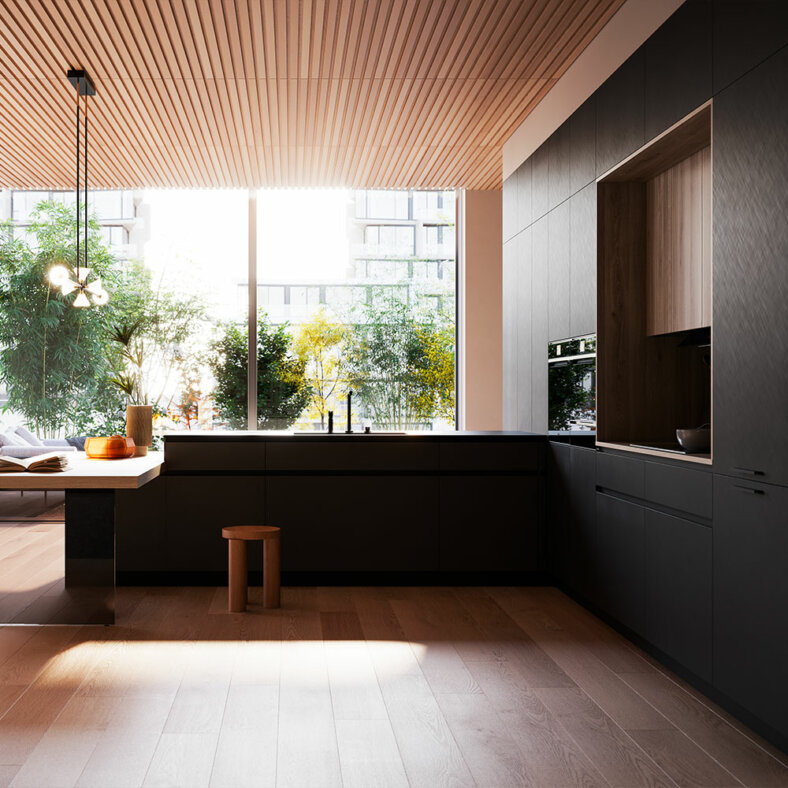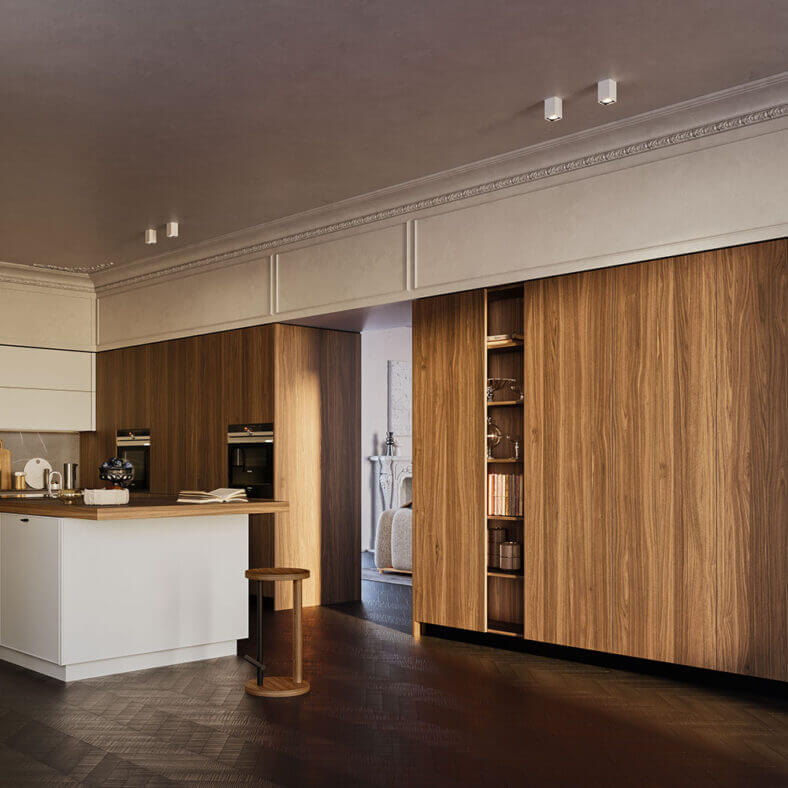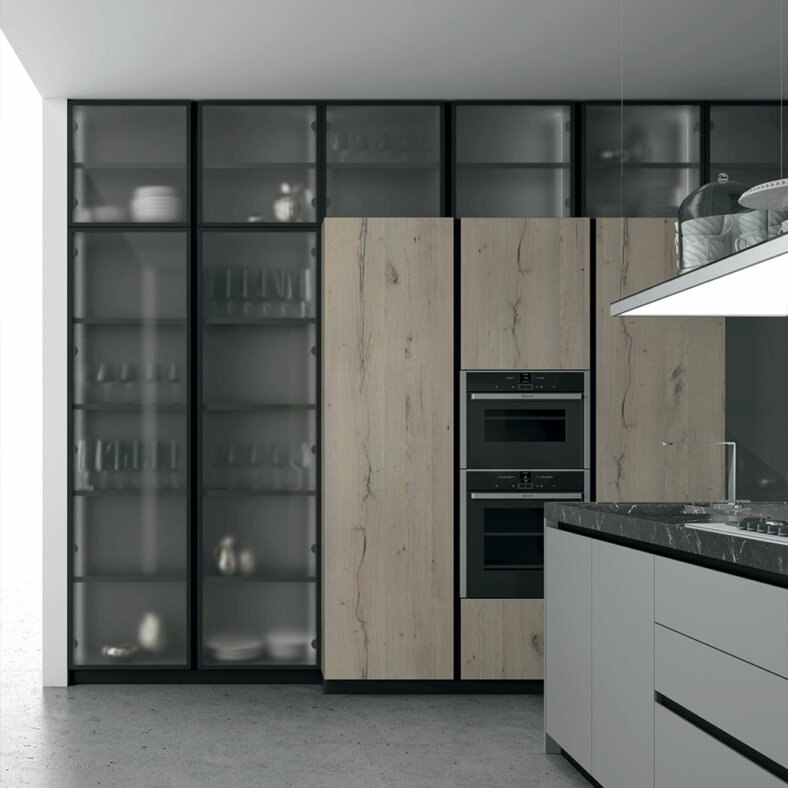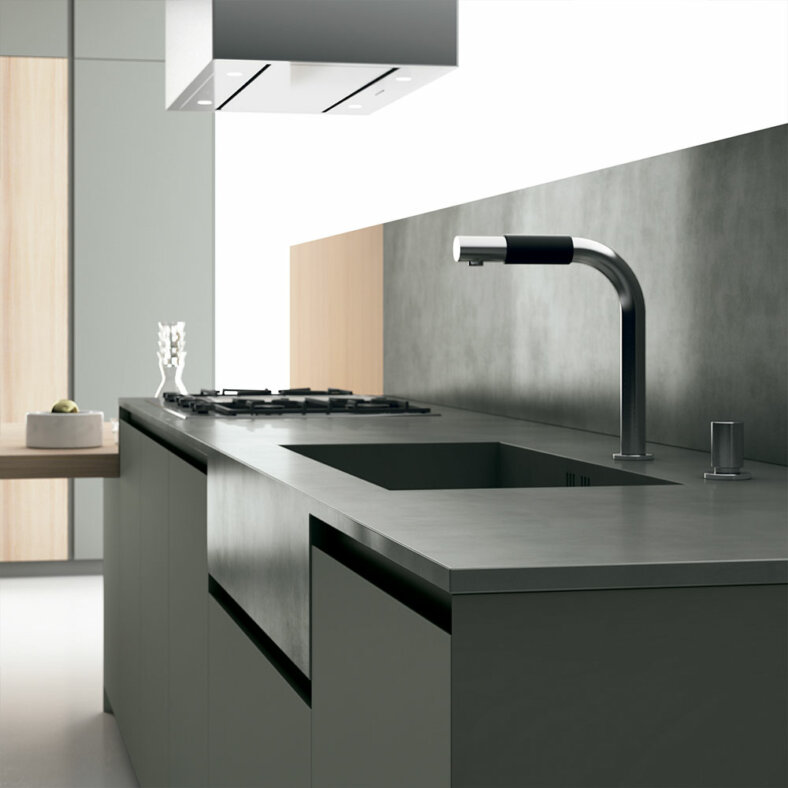Suggestions and guides
Inox stainless steel
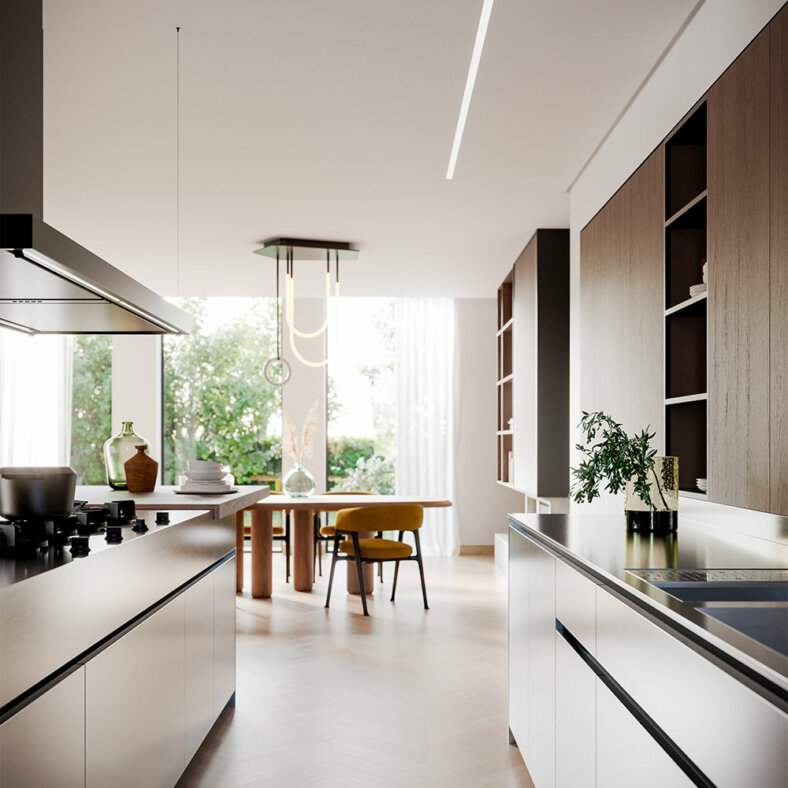
An eclectic material
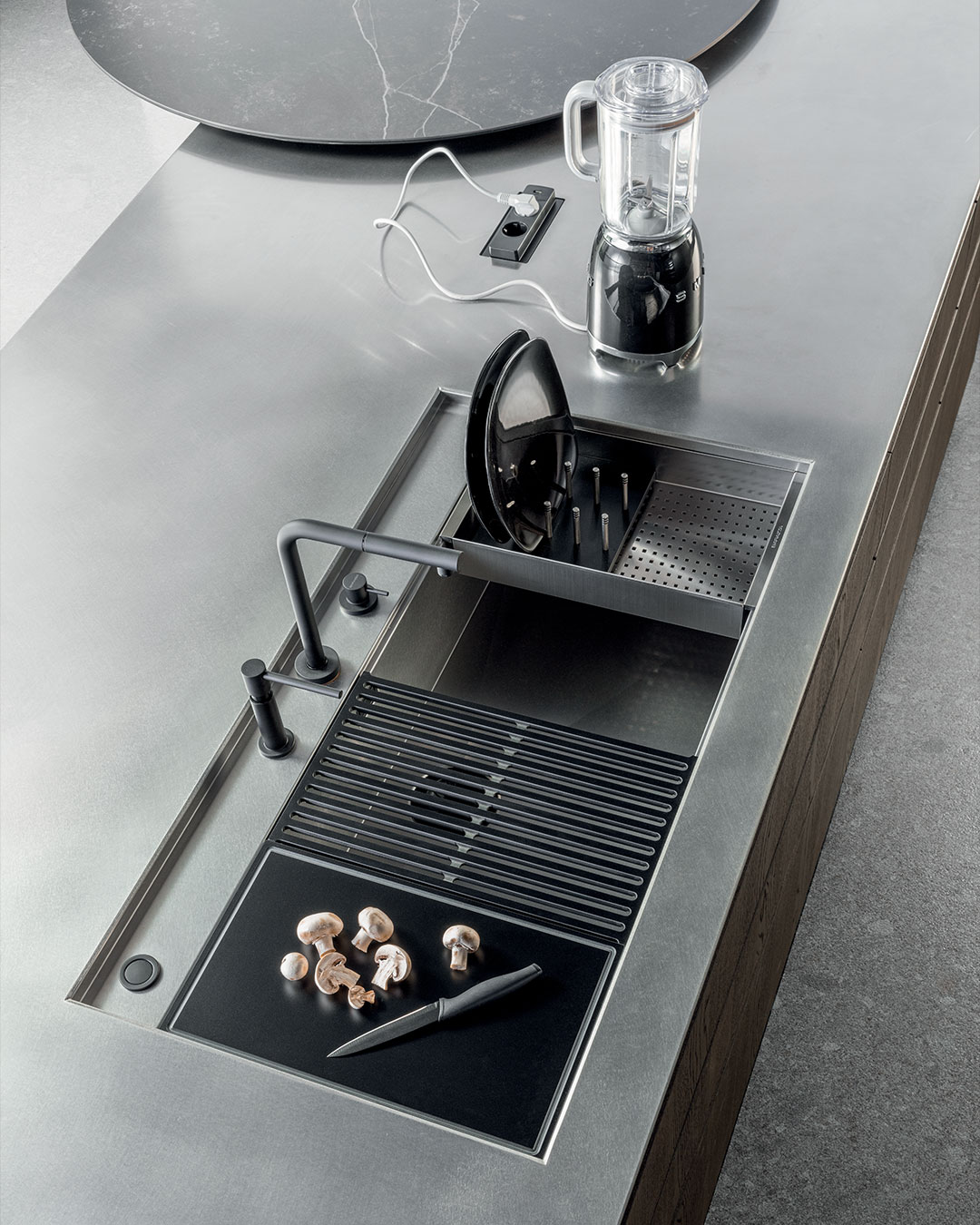
What is Inox stainless steel?
Stainless steel or inox steel is an alloy composed primarily of iron and carbon, the latter in quantities inferior to 1.2%. This is what sets it apart from all other steels, which are richer in carbon (up to 1.7%). This low quantity of carbon means that another component, chromium, is unable to bond with carbon and forms a layer of oxide that protects stainless steel against corrosion. Steel is even more resistant to corrosion when it contains percentages of chromium and nickel, which also translate into elevated strength and resistance. In the food industry the most common stainless steel is austenitic AISI 304, made of 18% chromium and 8% nickel, also known as 18/8 steel.
Characteristics of Inox stainless steel
Pseudo-professional kitchens in stainless steel are very popular in the furnishing industry, often in satin or vintage finishes that conceal this material’s tendency to scratch easily. Satin stainless steel kitchens are the result of a uniform and mono-directional mechanical scratching process, while vintage stainless steel kitchens are hand-scratched to obtain a more causal look. Stainless steel is often combined with wood to bring warmth to this material characterised by:
- optimum stain resistance
- optimum heat resistance
- optimum resistance to corrosion
- optimum hygiene
- stability over time
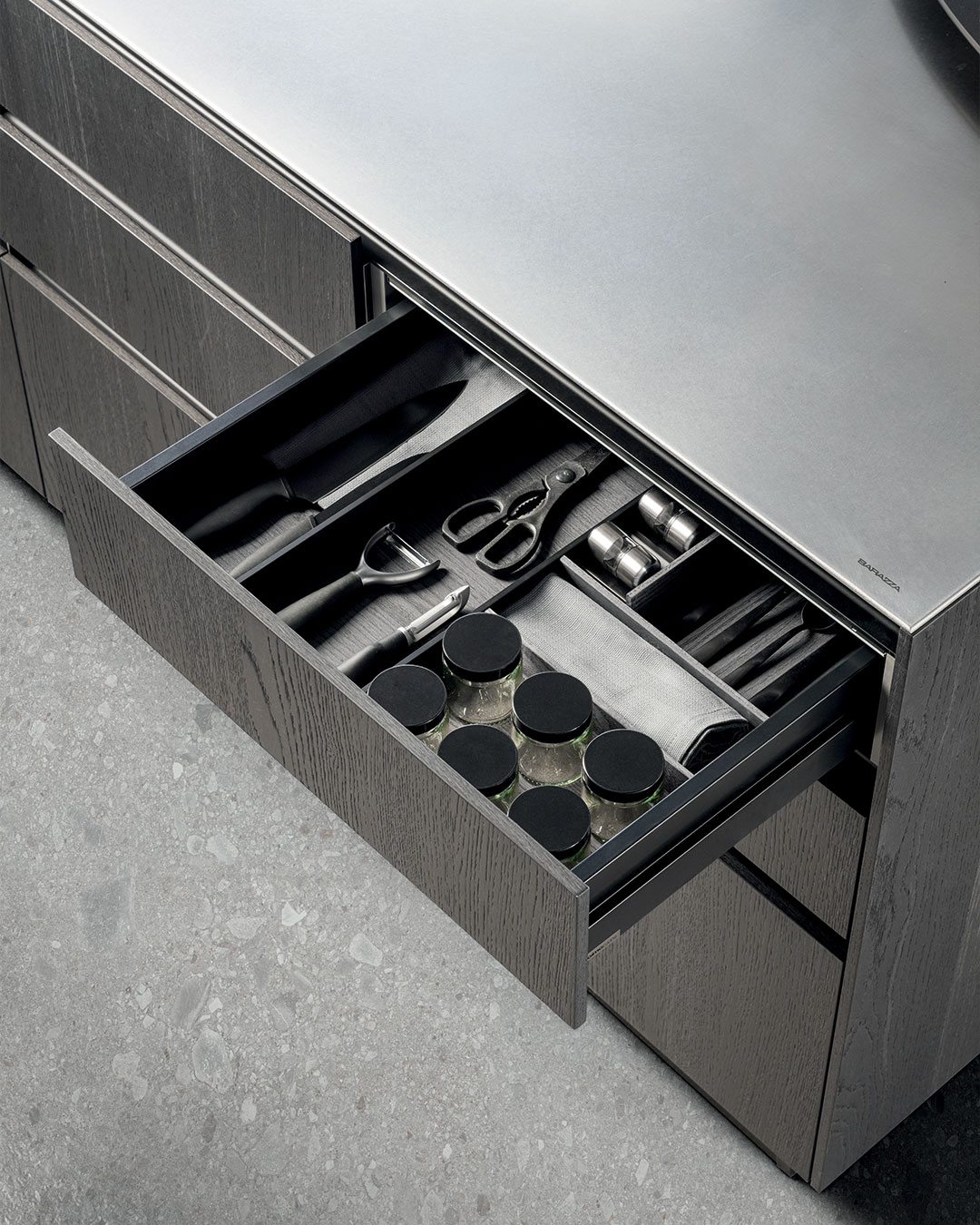
Steel: 100% recyclable
Steel is 100% recyclable and can be recycled an infinite number of times without losing its original properties. This potentially endless lifecycle makes it an ideal material for a sustainable economy. Steel’s productive and reproductive lifecycle is also becoming increasingly more ecologically sustainable, thanks to new equipment that reduces polluting emissions and the quantity of energy consumed.
What is more, the recycling of steel avoids the consumption of oil required to produce materials from new raw materials, diminishing the carbon footprint in terms of CO2 and other polluting emissions.
Kitchen fronts in Inox stainless steel
Professional-look stainless steel kitchen fronts are made from a layer of steel with welded and finished corners that create a clean and linear style, applied to a raw panel. The inner face of the fronts is generally finished in another, more affordable material. At Doimo Cucine, for example, our AISI 304 steel fronts are finished internally in a sheet of anodized aluminium, with a central core in expanded polymer, reinforced in correspondence with hardware fixings. The steel surface is also treated with nanotechnologies that help protect against stains, for example oil, grease and limescale, and create easy to clean surfaces.
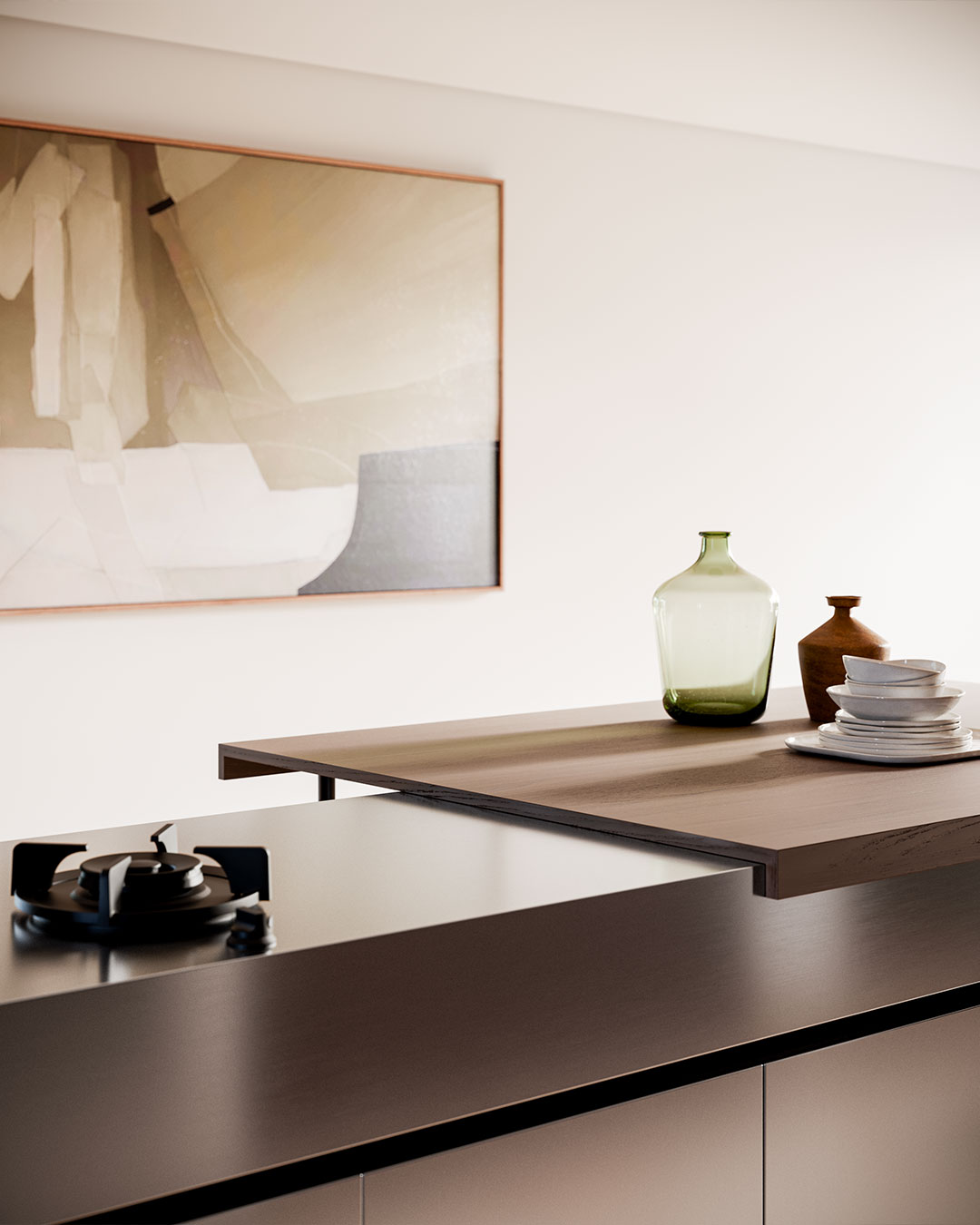
Kitchen work tops in Inox stainless steel
Stainless steel work tops are made from varying thicknesses of austenitic stainless steel, folded and fixed to a raw panel. Doimo Cucine, for example, uses a 1 mm sheet, with a satin or vintage finish, mounted on water-repellent particle board. The steel is folded at the front and sides and welded at the corners. Work tops often feature integrated splashes or splashbacks in stainless steel.
How to clean a stainless steel kitchen
Cleaning the surfaces of a stainless steel kitchen requires the day to day use of a soft cloth, tepid water and neutral soap, or special steel cleaning products. Always move the cloth in the direction of any satin finishes. Rinse generously and dry carefully with a soft dry cloth.
For stubborn stains, such as limescale or grease residue, clean surfaces with:
- water and vinegar (80% water and 20% vinegar)
- lemon juice dissolved in water
- non-abrasive and/or corrosive domestic detergents
Avoid:
- dragging kitchen utensils or other objects across the surfaces
- cleaning with corrosive products or detergents, such as acids and halogenated compounds (chlorides, bromides, iodides), chloride based solutions (i.e. bleach), muriatic acid and acids in general
- using knives or sharp utensils directly on the steel surface
- leaving ferrous elements on horizontal surfaces for long periods of time (cook top grilles, scissors, steel jars, etc.); when wet, they can leave difficult to remove stains
- leaving standing water on the surface, which can cause oxidation
